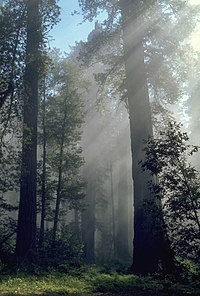
Photo from wikipedia
The objective of this study was to evaluate the effect of selective logging on the growth dynamics of Araucaria angustifolia in a natural forest of Rio Grande do Sul state,… Click to show full abstract
The objective of this study was to evaluate the effect of selective logging on the growth dynamics of Araucaria angustifolia in a natural forest of Rio Grande do Sul state, Brazil. Treatments were based on percentage reduction of the basal area per DBH class, namely, T0 (control) = 0%; T1 (light selective logging) = reduction of 20-30%; T2 (moderate selective logging) = reduction of 40-50%. Data were obtained prior to the management interventions and four, eight and 13 years after selective logging. Changes between treatments were assessed using the following parameters: absolute density, absolute dominance, importance value index, and growth rates. Results show that population reduction and canopy opening provided greater recruitment and higher growth rates for araucaria in the management treatments (T1 and T2) compared with those of the control treatment (T0). These results reinforce that management practices are necessary for the continuous development of araucaria in this forest formation.
Journal Title: Floresta e Ambiente
Year Published: 2018
Link to full text (if available)
Share on Social Media: Sign Up to like & get
recommendations!